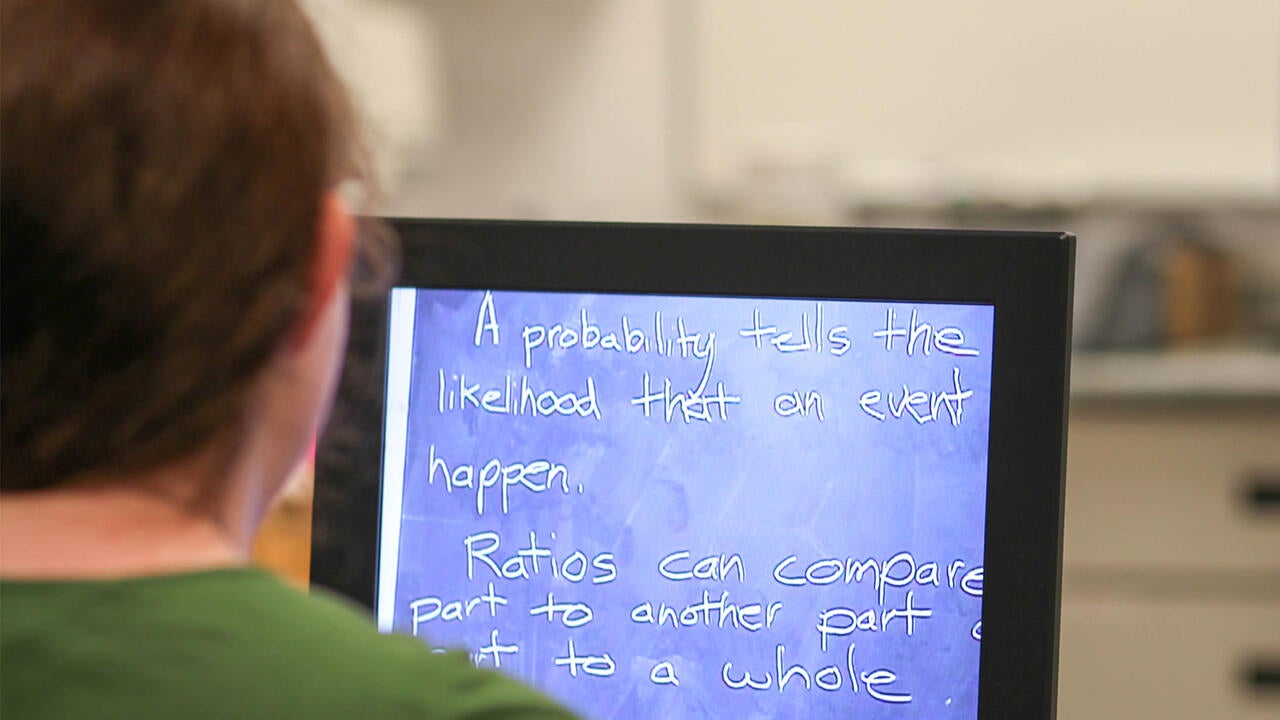
Fighting isolation through talk and technology
Despite the pandemic, Waterloo’s Centre for Sight Enhancement continues low vision support

Despite the pandemic, Waterloo’s Centre for Sight Enhancement continues low vision support
By Beth Bohnert School of Optometry and Vision ScienceAs the COVID-19 pandemic continues with no end in sight, many people find themselves struggling with feelings of grief.
“Grieving has become a big focus for many people,” Melinda Szilva says, low vision rehabilitation counsellor at the University of Waterloo’s Centre for Sight Enhancement (CSE). “As a society, we’re collectively mourning the loss of our routines, the loss of employment and the loss of loved ones.”
For people with vision impairment, who are already at risk for anxiety and depression, grief can be even more debilitating. That’s why Szilva and other members of the CSE are maintaining as many services as possible to support low vision patients, though delivery methods may have changed.
Tech support
Housed within the School of Optometry & Vision Science, the CSE’s Low Vision Clinic follows a holistic approach that includes assessments, visual aids and counselling. While assessments are currently on hold during the pandemic, service in other areas continues.
For example, the CSE manages the distribution and maintenance of closed-circuit television (CCTV) systems provided to clients across the province via the Ontario government’s Assistive Devices Program. People with low vision use CCTV units to magnify items, allowing them to read or do handiwork more easily.
Knowing how important the technology is to clients’ quality of life, Technician Bryan Ashby and Shipper/Receiver Enis Cahit are continuing to provide these services during the pandemic. They work at the CSE one or two days per week on alternate days, all while observing strict infection control protocols.
Meanwhile, Heidi Panchaud, the CSE’s Low Vision Therapist, and High Tech Assessors Dave Johnston and Kathryn Benoit, are contacting patients to ensure their assistive devices are working correctly and to answer any questions they may have.
“If there are any concerns, we try to troubleshoot. Sometimes solutions are as simple as adjusting lighting to reduce glare or holding reading material closer when using high-power readers,” Panchaud says. In other cases, she’s been able to connect with distributors to supply replacement parts for damaged devices.
“If clients already have technology like tablets, we can work remotely to help them use the accessibility features,” Benoit adds. She also notes that some companies are now offering free access to computer accessibility programs during the pandemic.
Patients’ reaction to the calls has been overwhelmingly positive.
“Everyone is happy that we cared enough to see how they were doing. And, like everyone else, they want to know when the pandemic will end,” Panchaud says.
Patients may be glad to talk to clinic staff but conducting appointments by phone can be a challenge, Szilva notes.
“The issues my clients are dealing with are already complex. Over the phone, you lose the visual cues that show how people are feeling,” she says. There are also unexpected technological issues.
Despite the difficulties, Szilva maintains a full case load that includes current clients as well as new ones referred by CNIB/Vision Loss Rehabilitation Canada or other eye care providers.
“I know what a difference counselling makes to people, especially during this challenging time,” she says.
While COVID-19 is wreaking havoc on the lives of thousands of Canadians, it also offers unique opportunities to better understand the needs of people in the low vision community.
“Oddly enough, many people are telling me that the pandemic validates their feelings. Other people are now experiencing the loneliness and isolation that’s their everyday reality,” Szilva says.
As a result, the CSE has applied for funding to explore the effects of social isolation on people with low vision and the coping strategies they have developed as a result. By focusing on patients’ experience during COVID-19, the team hopes to provide evidence that could lead to better supports for people with vision impairment.

Read more
Here are the people and events behind some of this year’s most compelling Waterloo stories

Read more
A winter holiday message from President Vivek Goel

Read more
Shop Canadian this holiday season with festive porch plants, fashion-forward apparel, craft spirits and more from Waterloo entrepreneurs
The University of Waterloo acknowledges that much of our work takes place on the traditional territory of the Neutral, Anishinaabeg, and Haudenosaunee peoples. Our main campus is situated on the Haldimand Tract, the land granted to the Six Nations that includes six miles on each side of the Grand River. Our active work toward reconciliation takes place across our campuses through research, learning, teaching, and community building, and is co-ordinated within the Office of Indigenous Relations.